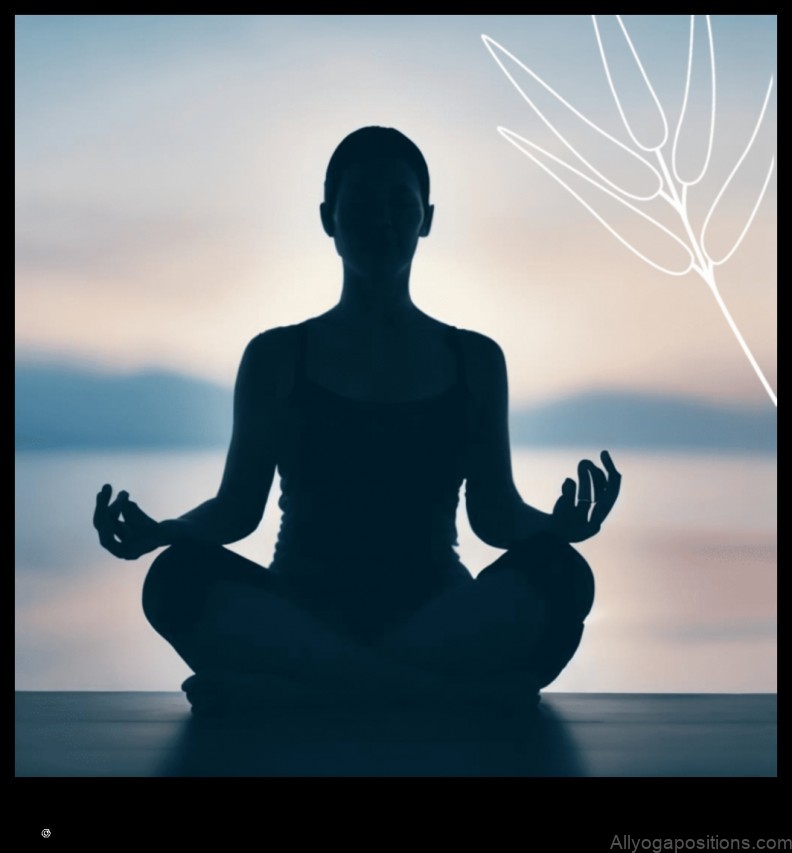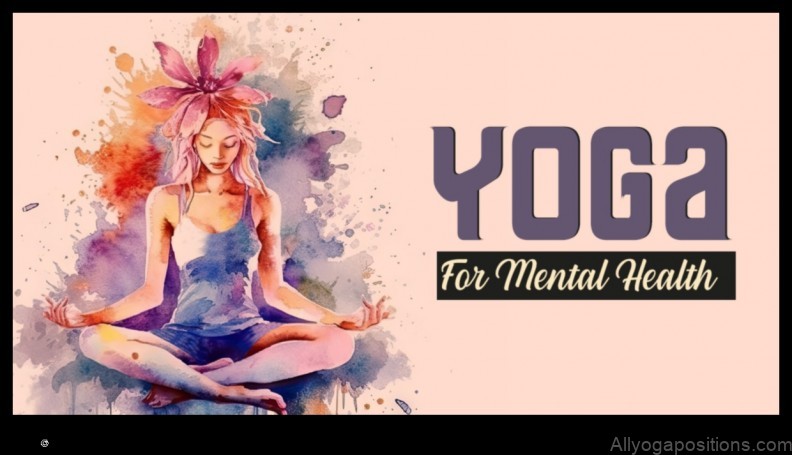
Introduction
Yoga is a mind-body practice that has been shown to have a number of benefits for mental health, including reducing stress, anxiety, and depression. Yoga can also help improve sleep, mood, and self-esteem.
What is yoga?
Yoga is a physical and mental practice that originated in ancient India. It combines poses (asanas), breathing exercises (pranayama), and meditation. Yoga can be practiced in a variety of settings, from a traditional yoga studio to a quiet room at home.
Benefits of yoga for mental health
Yoga has been shown to have a number of benefits for mental health, including:
- Reduced stress
- Reduced anxiety
- Reduced depression
- Improved sleep
- Improved mood
- Increased self-esteem
How to do yoga for mental health
Yoga can be a helpful way to improve your mental health, but it’s important to find a style of yoga that you enjoy and that fits your needs. There are many different types of yoga, so you may need to try a few different types before you find one that you like.
Once you’ve found a style of yoga that you enjoy, it’s important to practice regularly to get the most benefits. It’s recommended to practice yoga at least twice a week, but you may need to practice more often if you’re struggling with mental health issues.
When you’re practicing yoga, it’s important to focus on your breath and your body. Try to let go of any worries or stressors and focus on the present moment.
Yoga poses for stress relief
There are many yoga poses that can help to relieve stress. Some of the most common poses include:
- Child’s pose
- Forward fold
- Savasana (corpse pose)
- Pranayama (breathing exercises)
These poses can help to relax your muscles, calm your mind, and improve your overall sense of well-being.
Yoga poses for anxiety
Yoga can also be helpful for reducing anxiety. Some of the most effective poses for anxiety include:
- Cat/cow pose
- Bridge pose
- Warrior pose
- Tree pose
These poses can help to stretch your muscles, improve your circulation, and calm your mind.
Yoga poses for depression
Yoga can also be helpful for treating depression. Some of the most effective poses for depression include:
- Sun salutations
- Standing forward bend
- Half moon pose
- Savasana (corpse pose)
These poses can help to improve your mood, boost your energy levels, and reduce stress.
Yoga poses for sleep
Yoga can also help to improve sleep. Some of the most effective poses for sleep include:
- Corpse pose
- Shavasana (corpse pose)
- Child’s pose
- Reclining bound angle pose
These poses can help to relax your muscles, calm your mind, and prepare you for sleep.
Yoga
| Topic | Features |
|---|---|
| Yoga and Mental Health | Introduction, What is yoga?, Benefits of yoga for mental health |
| Yoga poses for stress relief | Yoga poses for stress relief |
| Yoga poses for anxiety | Yoga poses for anxiety |
| Yoga poses for depression | Yoga poses for depression |
| FAQ | FAQ |

II. What is yoga?
Yoga is a mind-body practice that originated in ancient India. It combines physical postures, breathing exercises, and meditation or relaxation. Yoga can be practiced in a variety of settings, from studios to gyms to parks. There are many different styles of yoga, each with its own unique focus and benefits.
Benefits of yoga for mental health
Yoga has been shown to have a number of benefits for mental health, including reducing stress, anxiety, and depression. It can also improve mood, self-esteem, and sleep quality.
One study found that yoga can help to reduce stress levels by up to 50%. Another study found that yoga can help to improve mood and reduce symptoms of anxiety and depression.
Yoga can also help to improve sleep quality. One study found that yoga can help to reduce the amount of time it takes to fall asleep and increase the amount of deep sleep.
Yoga is a safe and effective way to improve mental health. It is a low-impact exercise that can be modified to meet the needs of all individuals.

IV. How to do yoga for mental health
Yoga is a mind-body practice that can help improve mental health in a number of ways.
Some of the benefits of yoga for mental health include:
- Reduced stress and anxiety
- Improved mood
- Increased self-awareness
- Improved sleep
- Enhanced relaxation
If you are interested in trying yoga for mental health, there are a few things you can do to get started.
- Find a yoga class that is right for you. There are many different types of yoga, so it is important to find a class that is suited to your needs and interests.
- Listen to your body. Yoga is a gentle practice, so it is important to listen to your body and modify poses as needed.
- Practice regularly. The benefits of yoga are cumulative, so it is important to practice regularly to see the full benefits.
Yoga can be a great way to improve your mental health. If you are interested in trying yoga, be sure to find a class that is right for you and practice regularly.
V. Yoga poses for stress relief
Yoga poses can help to relieve stress in a number of ways. They can:
- Relax the body
- Reduce muscle tension
- Improve breathing
- Increase circulation
- Promote relaxation
Here are some specific yoga poses that can help to relieve stress:
- Child’s pose
- Supine twist
- Seated forward bend
- Bridge pose
- Plow pose
You can practice these poses at home or in a yoga class. If you are new to yoga, it is important to start slowly and gradually increase the length of time you hold each pose.
Yoga can be a helpful way to relieve stress and promote relaxation. If you are feeling stressed, try practicing some yoga poses and see how you feel.
VI. Yoga poses for anxietyYoga poses can help to relieve anxiety by reducing stress, improving mood, and increasing relaxation. Some specific poses that may be helpful for anxiety include:
Child’s pose: This pose is a great way to relax and release tension. To do child’s pose, start by kneeling on the floor with your toes together and your knees apart. Then, lower your torso down to your thighs, resting your forehead on the ground. You can extend your arms out in front of you or rest them on your thighs. Hold this pose for 5-10 breaths.
Cat-cow pose: This pose is a gentle backbend that can help to relieve tension in the spine and neck. To do cat-cow pose, start on your hands and knees with your hands shoulder-width apart and your knees hip-width apart. Inhale and arch your back, looking up towards the ceiling. Exhale and round your back, tucking your chin to your chest. Repeat this movement for 5-10 breaths.
Downward-facing dog: This pose is a great way to stretch the hamstrings and calves, and it can also help to improve circulation. To do downward-facing dog, start on your hands and knees with your hands shoulder-width apart and your knees hip-width apart. Then, step your feet back so that your toes are touching and your legs are straight. Walk your hands forward until your arms are straight and your body forms an inverted V shape. Hold this pose for 5-10 breaths.
Plow pose: This pose is a deep backbend that can help to relieve tension in the spine and neck. To do plow pose, start by lying on your back with your legs extended and your arms at your sides. Then, bend your knees and bring your feet to your hips. Inhale and reach your arms up overhead, then exhale and swing your legs over your head so that your toes touch the ground behind you. Hold this pose for 5-10 breaths.
Bridge pose: This pose is a great way to stretch the hamstrings and calves, and it can also help to relieve tension in the back. To do bridge pose, start by lying on your back with your knees bent and your feet flat on the floor. Then, press your feet into the floor and lift your hips up until your body forms a straight line from your shoulders to your knees. Hold this pose for 5-10 breaths.
VII. Yoga poses for depression
Yoga poses for depression can help to improve mood, reduce stress, and increase energy levels. Some of the best yoga poses for depression include:
- Child’s pose
- Supported bridge pose
- Reclining hero pose
- Seated forward bend
- Savasana (corpse pose)
These poses can be done in a yoga class or at home. It is important to listen to your body and only do poses that feel comfortable. If you are feeling particularly depressed, it is important to talk to a doctor or mental health professional.
Yoga poses for sleep
VIII. Yoga poses for sleep
Yoga can help improve sleep quality by reducing stress, anxiety, and pain. It can also help to improve sleep habits and routines.
Here are some yoga poses that can help you sleep better:
- Child’s pose
- Corpse pose
- Forward fold
- Supta virasana (reclining hero pose)
- Savasana (corpse pose)
You can practice these poses at any time of day, but they are especially helpful before bed. To get the most benefit, try to practice them in a quiet, dark room.
If you have trouble falling asleep, try practicing yoga for 20-30 minutes before bed. If you wake up in the middle of the night, try doing a few yoga poses to help you fall back asleep.
Yoga can be a great way to improve your sleep quality and get the rest you need.
IX. Yoga poses for pain managementYoga can help to manage pain by increasing flexibility, strength, and range of motion. It can also help to reduce stress and anxiety, which can contribute to pain.
There are many different yoga poses that can be helpful for pain management. Some of the most common include:
- Child’s pose
- Cat/cow pose
- Downward-facing dog
- Pigeon pose
- Seated forward bend
When practicing yoga for pain management, it is important to listen to your body and avoid any poses that cause pain. It is also important to focus on your breath and to relax your muscles as much as possible.
Yoga can be a helpful way to manage pain, but it is not a substitute for medical care. If you are experiencing pain, it is important to see a doctor to rule out any underlying medical conditions.
X. FAQ
Q: What is yoga?
Yoga is a mind and body practice with a 5,000-year history in ancient Indian philosophy. Yoga combines physical postures, breathing exercises, and meditation or relaxation.
Q: What are the benefits of yoga for mental health?
Yoga has been shown to have a number of benefits for mental health, including reducing stress, anxiety, and depression. Yoga can also improve mood, sleep quality, and self-esteem.
Q: How can I do yoga for mental health?
There are many ways to do yoga for mental health. You can practice yoga at home, in a yoga studio, or with a yoga teacher. There are also many different types of yoga, so you can find a style that is right for you.
Table of Contents
Maybe You Like Them Too
- Zen Yoga Zephyr Find Your Inner Peace
- Mindful Movement Mastery Yoga for Fluidity – A Guide to Moving with Grace and Ease
- Meditation and Mindful Time Management Optimize Your Day and Achieve Your Goals
- Meditation and Mindful Eating A Balanced Approach to Nourishing the Body and Soul
- Yoga for Emotional Balance A Gentle Practice for Cultivating Kindness
